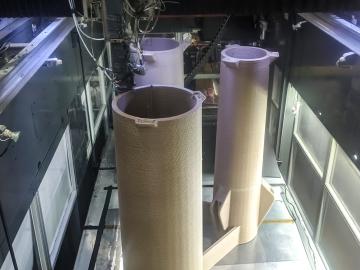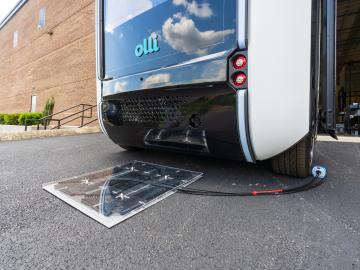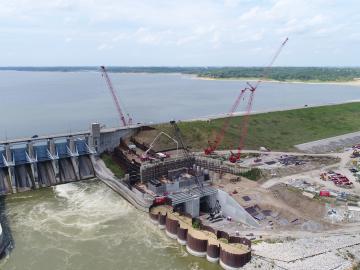
Filter News
Area of Research
- (-) Energy Frontier Research Centers (1)
- (-) Energy Science (61)
- (-) Fusion Energy (1)
- (-) Materials for Computing (8)
- Advanced Manufacturing (1)
- Biology and Environment (33)
- Computational Biology (1)
- Computational Engineering (2)
- Computer Science (7)
- Electricity and Smart Grid (3)
- Functional Materials for Energy (1)
- Fusion and Fission (3)
- Materials (49)
- National Security (20)
- Neutron Science (18)
- Nuclear Science and Technology (3)
- Quantum information Science (2)
- Sensors and Controls (1)
- Supercomputing (66)
News Topics
- (-) Grid (39)
- (-) Machine Learning (7)
- (-) Mercury (3)
- (-) Nanotechnology (15)
- (-) Summit (6)
- 3-D Printing/Advanced Manufacturing (82)
- Advanced Reactors (13)
- Artificial Intelligence (8)
- Big Data (5)
- Bioenergy (26)
- Biology (11)
- Biomedical (7)
- Biotechnology (4)
- Buildings (38)
- Chemical Sciences (18)
- Clean Water (8)
- Composites (17)
- Computer Science (32)
- Coronavirus (15)
- Critical Materials (9)
- Cybersecurity (8)
- Energy Storage (71)
- Environment (54)
- Exascale Computing (2)
- Fossil Energy (2)
- Frontier (3)
- Fusion (16)
- High-Performance Computing (6)
- Hydropower (3)
- Isotopes (2)
- Materials (44)
- Materials Science (40)
- Mathematics (2)
- Microelectronics (1)
- Microscopy (12)
- Molten Salt (1)
- National Security (6)
- Neutron Science (16)
- Nuclear Energy (17)
- Partnerships (12)
- Physics (1)
- Polymers (14)
- Quantum Computing (1)
- Quantum Science (5)
- Security (7)
- Simulation (4)
- Space Exploration (4)
- Statistics (1)
- Transportation (68)
Media Contacts

A team of researchers at Oak Ridge National Laboratory demonstrated the ability to additively manufacture power poles from bioderived and recycled materials, which could more quickly restore electricity after natural disasters.

Oak Ridge National Laboratory researchers demonstrated their wireless charging technology on an autonomous electric vehicle for the first time in a project with Local Motors.

Through a consortium of Department of Energy national laboratories, ORNL scientists are applying their expertise to provide solutions that enable the commercialization of emission-free hydrogen fuel cell technology for heavy-duty

Researchers at the Department of Energy’s Oak Ridge National Laboratory and the University of Tennessee are automating the search for new materials to advance solar energy technologies.

A method developed at Oak Ridge National Laboratory to print high-fidelity, passive sensors for energy applications can reduce the cost of monitoring critical power grid assets.

Collaborators at Oak Ridge National Laboratory and the University of Tennessee Health Science Center are developing a breath-sampling whistle that could make COVID-19 screening easy to do at home.

A new Department of Energy report produced by Oak Ridge National Laboratory details national and international trends in hydropower, including the role waterpower plays in enhancing the flexibility and resilience of the power grid.

In the quest for advanced vehicles with higher energy efficiency and ultra-low emissions, ORNL researchers are accelerating a research engine that gives scientists and engineers an unprecedented view inside the atomic-level workings of combustion engines in real time.

Six scientists at the Department of Energy’s Oak Ridge National Laboratory were named Battelle Distinguished Inventors, in recognition of obtaining 14 or more patents during their careers at the lab.

The annual Director's Awards recognized four individuals and teams including awards for leadership in quantum simulation development and application on high-performance computing platforms, and revolutionary advancements in the area of microbial


